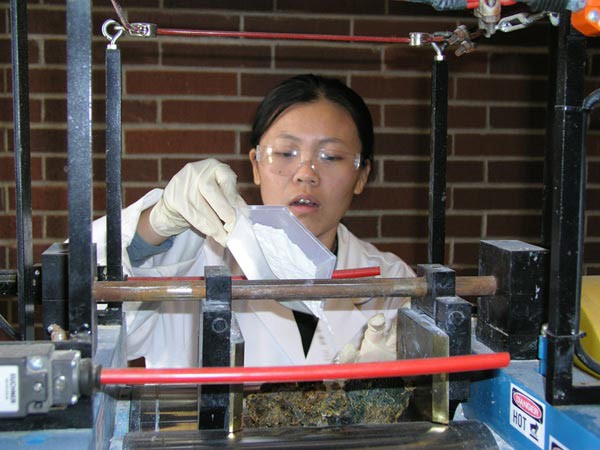
Wooden tires went out of style a century ago, along with buggy whips and horse-drawn wagons, but if an Oregon State University researcher has anything to say about it, a modern relative of the wooden tire might lead to the first major change in automobile tire design and production in quite some time.
Kaichang Li, a professor of wood science and engineering, thinks that automobile owners may some day be driving on tires that are reinforced with microcrystalline cellulose from trees, which could make the tires cost less, perform better, and require less fuel.
While automobile design and technology have experienced a great many revolutionary changes in recent years, Li said that his research “could lead to a new generation of automotive tire technology, one of the first fundamental changes to come around in a long time.”
According to Li, who received a 2007 Presidential Green Chemistry Challenge Award from the National Academy of Sciences for his work on sustainable wood products, cellulose fiber has been used for about 25 years as a reinforcement in some rubber and automotive products, including belts, hoses, mats, and insulation, but it has never before been used in tires. The preferred fillers in tires are carbon black and silica, which are expensive and energy intensive; they’re also heavy, which reduces a car’s fuel efficiency.
In his search for new types of reinforcing fillers for tires, Li and graduate student Wen Bai turned to microcrystalline cellulose, a product that can be easily made from almost any type of plant fibers using a low-cost process called acid hydrolysis. About 40 to 50 percent of wood is cellulose.
The researchers replaced about 12 percent of the silica used in conventional tire manufacturing with cellulose, which decreased the amount of energy needed to compound the rubber composite and improved the composite’s heat resistance while retaining its tensile strength. The study showed that the traction of the cellulose-reinforced tires was comparable to conventional tires in wet and rainy conditions. In addition, when the tires were tested in hot summertime temperatures, they generated less rolling friction, which would improve the fuel efficiency of vehicles using the tires.
While Li said that he still needs to confirm the long-term durability of tires made with cellulose, he has already received a number of calls from tire makers and rubber processing firms that are interested in the technology. He made no estimates about how much money those companies could save using the new process, but he suggested that they could reduce their energy costs significantly.
Li’s previous discovery – a nontoxic, soy-based adhesive for making plywood for cabinetry – was quickly commercialized under the PureBond brand, so it may not be long before we begin to see tires made with cellulose reinforcement on the roads.

